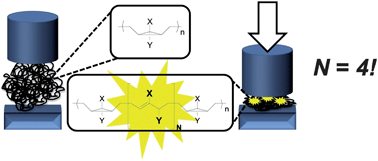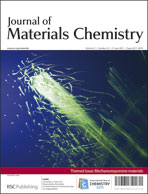The incorporation of mechanically active functional groups, or mechanophores, along polymer backbones offers opportunities for new stress-responsive material properties and also provides a method by which to probe fundamental questions related to molecular stress distributions in polymeric materials under load. The activation of covalent chemistry in polymers has primarily been demonstrated in solution, but to date little is known regarding activation in the solid state. In the latter regard, recent effort has focused on the use of spectroscopically active mechanophores that directly probe the presence of stress within materials. The distribution of forces within individual polymer chains, however, has yet to be characterized. Herein we report that gem-dihalocyclopropane (gDHC) functionalized polybutadiene is mechanochemically active in the solid state, and that the strain-triggered ring opening of the gDHCs provides quantitative information regarding the number of mechanically active monomers and the size of the mechanically activated domains along individual polymer backbones within bulk materials subjected to compressive and tensile loads. The results show that high mechanical forces are concentrated over lengths of only a few monomers.

You have access to this article
 Please wait while we load your content...
Something went wrong. Try again?
Please wait while we load your content...
Something went wrong. Try again?


 Please wait while we load your content...
Please wait while we load your content...